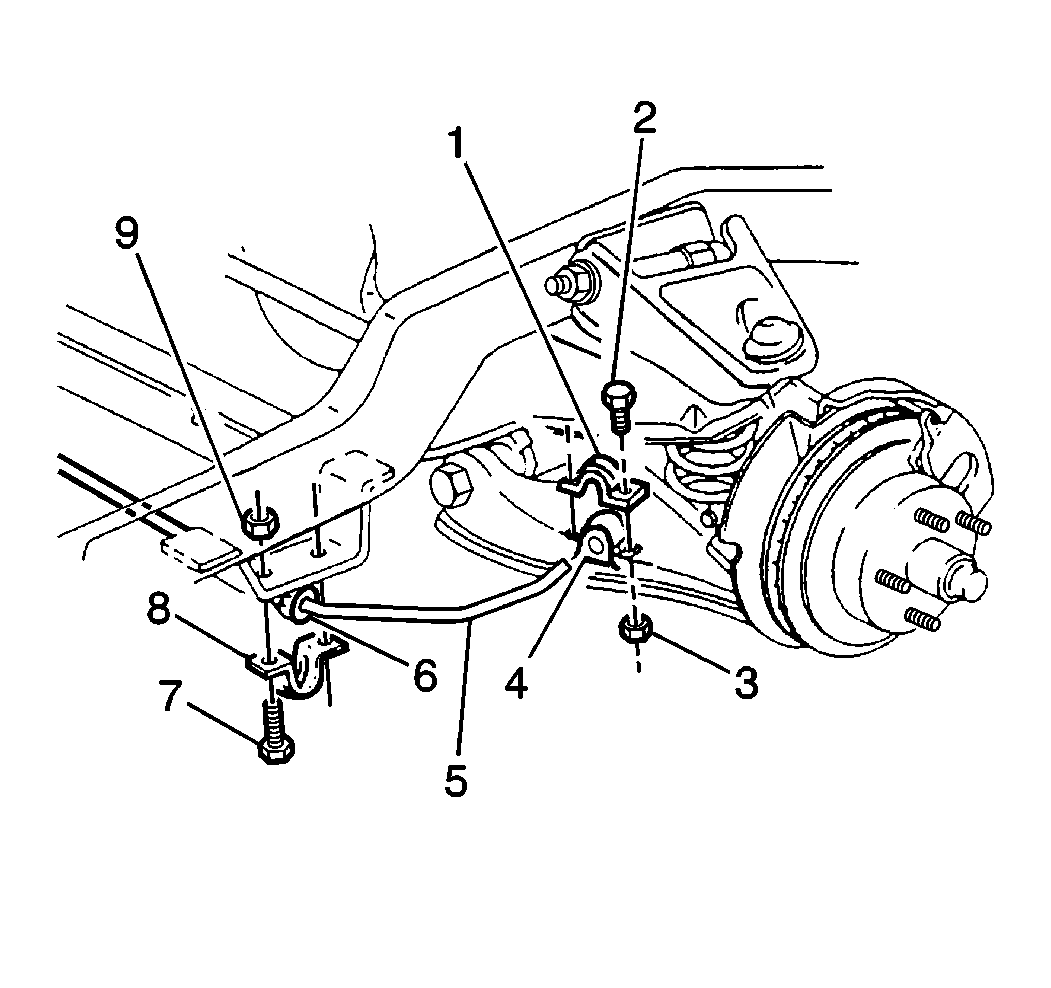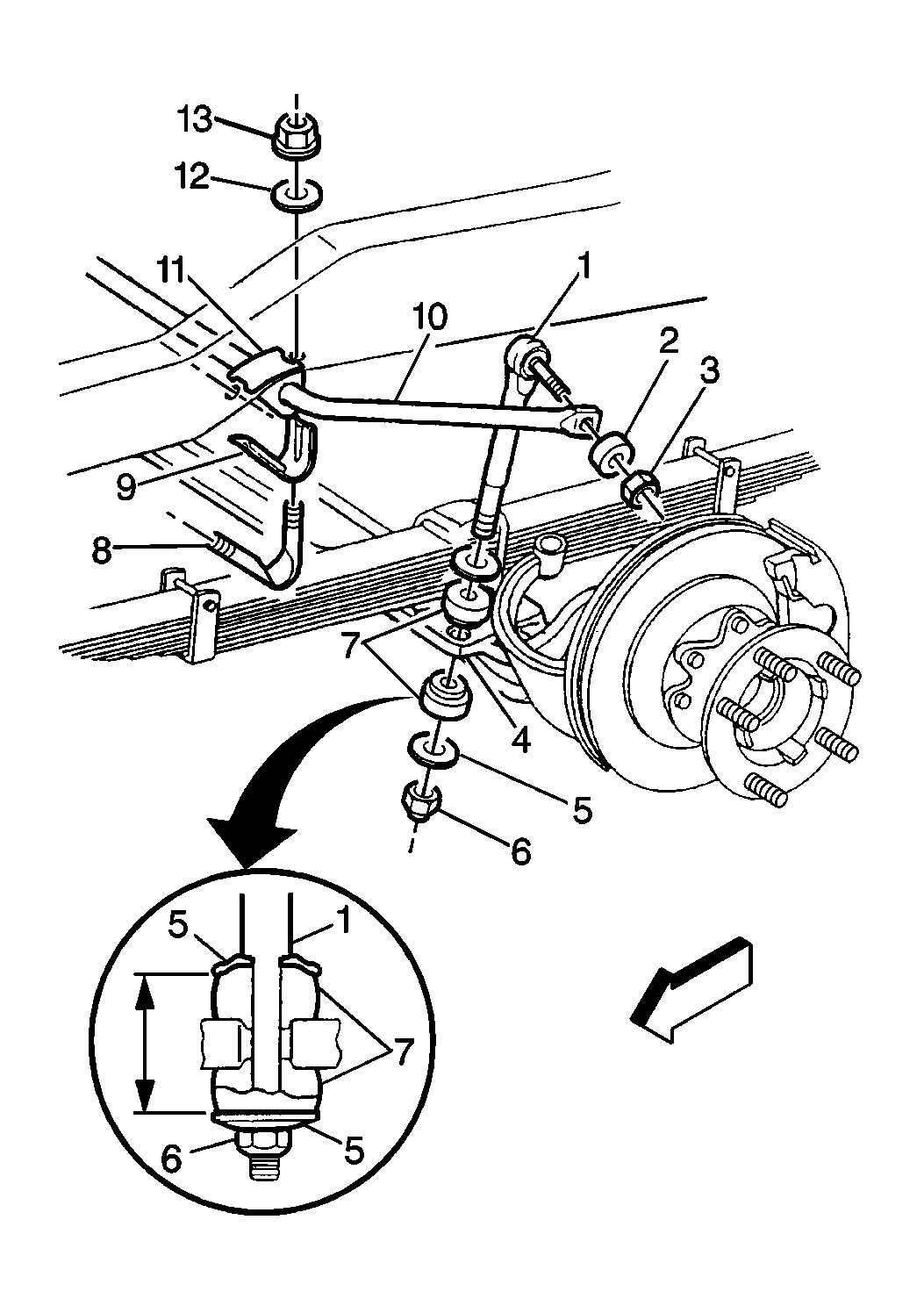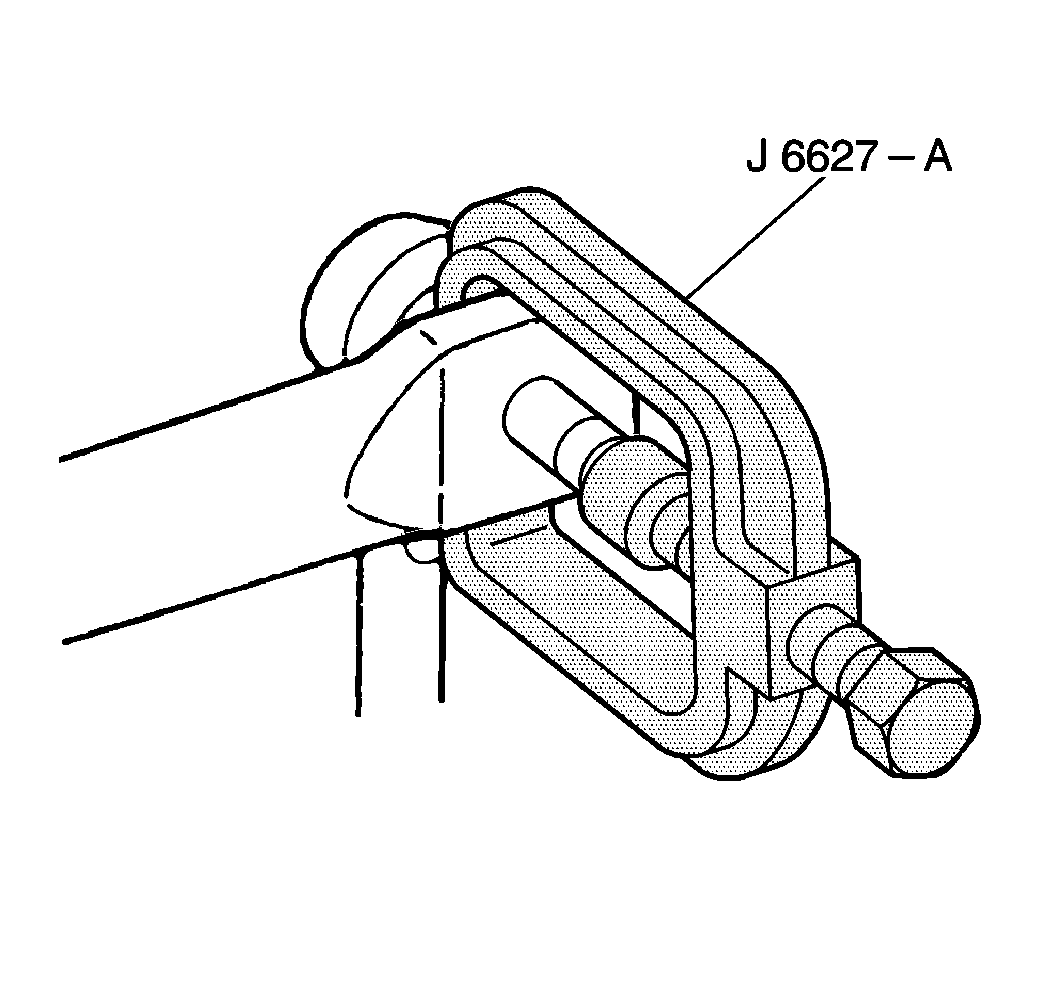Stabilizer Shaft Replacement Independent
Removal Procedure
- Raise the vehicle. Support the vehicle with suitable safety stands.
- Remove the tire and wheel assembly. Refer to
Tire and Wheel Removal and Installation
in Tires
and Wheels.

- Remove the clamp from
the following components:
- Remove the clamp (8).
- Remove the stabilizer shaft (5) from the frame.
- Remove the clamp from the following components:
| • | The control arm bolts (2) |
- Remove the clamp (1).
- Remove the stabilizer shaft (5) from the lower control
arm.
- Remove the bushings (6).
| • | Inspect the bushings for excessive wear, deterioration, or other
damage. |
| • | Replace the bushings as necessary. |
Installation Procedure

- Install the bushings (6)
to the stabilizer shaft (5).
| • | The slit in the insulator should face forward. |
| • | Use rubber lubricant in order to ease installation. |
- Install the stabilizer shaft (5) to the vehicle.
- Install the clamps (8) to the frame.
- Install the following components:
- Install the clamps (1) to the control arm.
Notice: Use the correct fastener in the correct location. Replacement fasteners
must be the correct part number for that application. Fasteners requiring
replacement or fasteners requiring the use of thread locking compound or sealant
are identified in the service procedure. Do not use paints, lubricants, or
corrosion inhibitors on fasteners or fastener joint surfaces unless specified.
These coatings affect fastener torque and joint clamping force and may damage
the fastener. Use the correct tightening sequence and specifications when
installing fasteners in order to avoid damage to parts and systems.
- Install the following
components:
Tighten
Tighten the nuts to 33 N·m (24 lb ft).
- Install the tire and wheel assembly. Refer to
Tire and Wheel Removal and Installation
in Tires
and Wheels.
- Lower the vehicle.
Stabilizer Shaft Replacement I-Beam
Removal Procedure
Tools Required
J 6627-A Tie Rod Remover
- Raise the vehicle. Support the vehicle with suitable safety stands.
- Remove the tire and wheel assembly. Refer to
Tire and Wheel Removal and Installation
in Tires
and Wheels.

- Remove the nut (3)
and the washer (2).

- Separate the stabilizer
shaft (10) from the stabilizer link (1). Use the J 6627-A
in order to separate the stabilizer
link from the stabilizer end.

- Remove the following components:
- Remove the stabilizer shaft (10) from the frame.
- Remove the insulator (11) from the stabilizer shaft.
- Remove the following components:
- Remove the stabilizer link (1) from the front axle (4).
Pull the link from the axle. Another insulator and retainer will come off
of the link.
Installation Procedure

- Connect the stabilizer
link (1) to the front axle (4). Slide a retainer (5)
and an insulator (7) onto the link. Insert the link into the
proper hole in the front axle.
Notice: Use the correct fastener in the correct location. Replacement fasteners
must be the correct part number for that application. Fasteners requiring
replacement or fasteners requiring the use of thread locking compound or sealant
are identified in the service procedure. Do not use paints, lubricants, or
corrosion inhibitors on fasteners or fastener joint surfaces unless specified.
These coatings affect fastener torque and joint clamping force and may damage
the fastener. Use the correct tightening sequence and specifications when
installing fasteners in order to avoid damage to parts and systems.
- Install the following
componets:
Tighten
Tighten the nut until the distance between each retainer is 52.8 mm
(2.08 in).
- Install the stabilizer shaft (10) to the frame.
- Install the insulators (11) onto the stabilizer shaft.
- Install the following components:
Tighten
Tighten the nuts to 54 N·m (40 lb ft).
- Connect the stabilizer shaft (10) to the stabilizer link (1).
- Install the washer (2) and the nut (3).
Tighten
Tighten the nuts to 63 N·m (47 lb ft).
- Install the tire and wheel assembly. Refer to
Tire and Wheel Removal and Installation
in Tires
and Wheels.
- Lower the vehicle.






